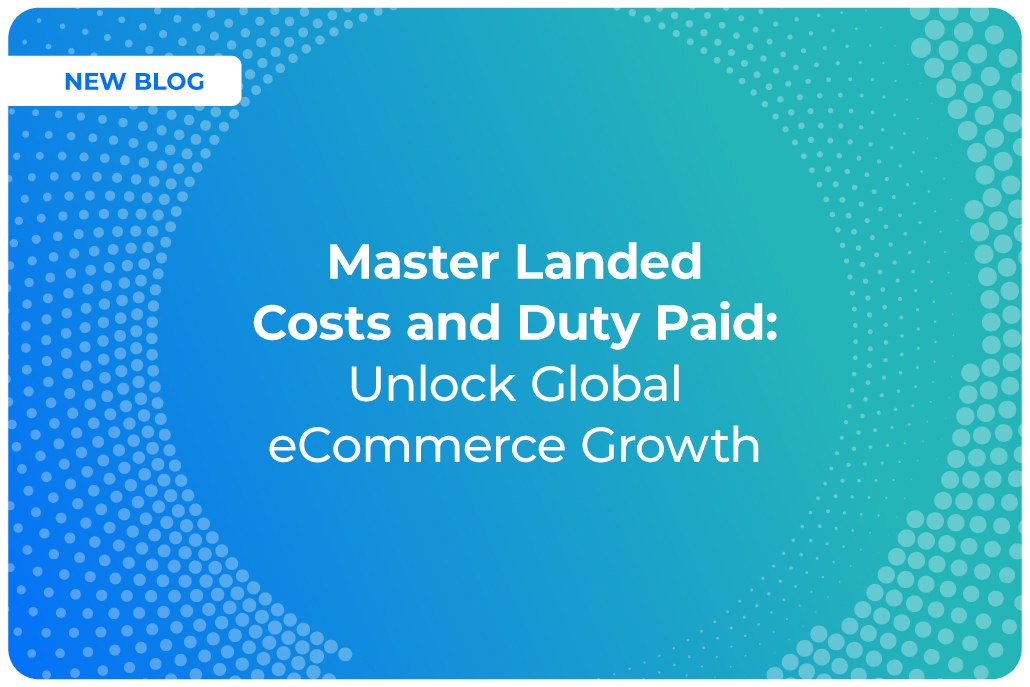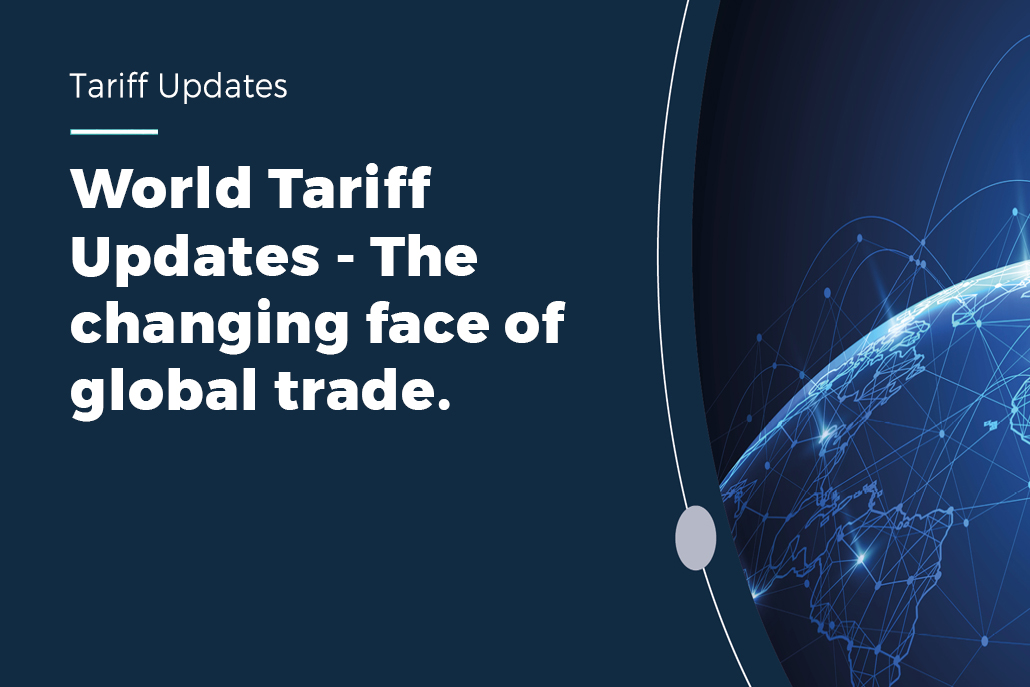Exporting and importing goods across borders involves a crucial step known as customs clearance. This process ensures the smooth and legal flow of goods between countries, collection of the correct import duties and taxes, and preventing illegal activities such as smuggling. In this guide, we’ll delve into the intricacies of customs clearance, exploring the various processes, compliance measures, and the pivotal role Hurricane Commerce plays in facilitating a streamlined and efficient experience for businesses globally.
What is Customs Clearance?
At its core, customs clearance is the formal process of authorising the exit or entry of goods across international borders. It involves a series of checks, verifications, and documentation to ensure that the imported or exported items comply with the regulations of both the sending and destination country.
The Customs Clearance Process
Understanding that the customs clearance process is paramount for businesses engaged in international trade including:
Data checks
At the forefront of the customs clearance process is data checks. This involves providing a comprehensive set of data alongside official documentation that verifies the type of goods, nature, origin, and value of the goods being exported and imported. Common information that’s documented includes commercial invoices, packing lists, bills of lading, and certificates of origin. Accurate and complete documentation is crucial to prevent delays and ensure compliance with customs regulations.
Precise, complete and accurate information is crucial. Customs authorities rely on these details to determine applicable duties, taxes, and adherence to regulations. Any discrepancies or inaccuracies can lead to delays, fines, or even the seizure of goods. This information should be provided electronically as well as within the required documentation, which helps to speed up the customs clearance process.
Physical checks
Physical inspections involve a detailed examination of the actual goods. Customs authorities may choose to inspect shipments randomly or based on risk assessments. These inspections aim to verify the physical characteristics of the goods, classification and valuation, ensuring they match the declared information. They are crucial for identifying mis-declared or undervalued items, ensuring compliance with safety standards, and preventing illicit activities.
There may also be checks of just the documentation against the data supplied. If any abnormalities are found this may lead to a physical examination of goods also.
Businesses and individuals must adhere to strict protocols during physical inspections to avoid any disruptions to the export and importing of goods.
Targeted checks
Exploring the risk assessment methodologies employed by customs authorities. This includes profiling shipments based on factors such as the nature of the goods, origin, and historical compliance records. Businesses and individuals need to understand that consistently accurate, complete and timely data lowers risks during customs checks.
Transparent and precise information from businesses and individuals is paramount in the targeted checks phase. By providing accurate details about the commodity, nature, origin, and intended use of the goods, businesses and individuals will contribute to a smoother risk assessment process.
Post-clearance audits
Even after goods have been cleared, customs authorities may conduct post-clearance audits to ensure that declarations had been made correctly and complied with regulations. These audits may involve a review of the accuracy of declarations, documentation, and the adherence to customs regulations.
If a misdeclaration is identified, customs may require a post entry to be submitted and the correct duties and taxes are paid.
Accurate record-keeping is essential for businesses and individuals to demonstrate ongoing compliance with customs regulations. The ability to provide comprehensive and precise records helps expedite post-clearance audits and reduces the risk of penalties or fines.
Understanding these levels is crucial for businesses and individuals involved in international trade, as compliance varies across countries.
Routes to Customs Clearance
Customs clearance is a critical aspect of international trade, and businesses must be well-versed in the various routes available to facilitate a seamless flow of goods across borders. The choice of the clearance route depends on the specific needs and circumstances of each business:
Direct shipment to customer
This is a straightforward route to customs clearance. The exporting business ships goods directly to the end customer without the use of any intermediaries.
While this approach can offer simplicity and direct control over the shipping process, it requires the exporter to be well-versed in the customs regulations of the destination country. The responsibility for accurate documentation and compliance falls on both the exporter and importer, making it crucial to stay informed about the specific customs requirements of each country in which goods are delivered. It’s for this reason that this isn’t a common option for exporters and importers, as it requires both parties to remain fully compliant when exporting and importing goods.
Customs brokerage services
For businesses seeking professional assistance in navigating the complexities of customs procedures, customs brokerage services are an invaluable route. Customs brokers act as intermediaries between the business and customs authorities, leveraging their expertise to ensure smooth clearance processes.
These services include preparing and submitting documentation, calculating and paying duties and taxes, and facilitating communication between the business, individuals and customs officials. Engaging customs brokerage services not only saves time but also helps businesses avoid potential pitfalls and delays associated with customs clearance.
Utilising trade agreements
In the realm of international trade, leveraging existing trade agreements can be a strategic route to customs clearance. There may be trade agreements between two countries that are in place to help reduce or even eliminate trade barriers, promoting smoother and more cost-effective cross-border transactions.
It’s important to note that these trade agreements are driven by the origin of the goods — the country it was manufactured in — as opposed to the exporting country. It’s therefore crucial that all the product data is accurate, in order to provide as much detail to customs officers as possible and speed up clearance when exporting and importing.
Simplified and full clearances
The choice between simplified and full clearances is often dictated the transportation method as well as the value of the declared goods. Simplified clearances (low value clearance), typically offered by courier services, prioritise speed and efficiency, ensuring that goods reach their destination swiftly.
While this route may come with higher costs, it is ideal for time-sensitive shipments. On the other hand, full clearances follow the traditional customs clearance process and may take longer. The decision between simplified and full clearances depends on the nature of the goods, mode of transport, and the supplier of goods and services.
Understanding these routes to customs clearance empowers exporters to include the correct data, based on the value of the goods, the de minimis, the low value threshold in place, as well as the transport method chosen. Whether opting for direct shipments, engaging customs brokerage services, leveraging trade agreements, or choosing between express and standard clearances, businesses can navigate the intricate world of customs procedures with greater confidence and efficiency.
Benefits of Secured Supply Chain Accreditation For Exporters And Importers
The Authorized Economic Operator (AEO) program is an accreditation for importers and exporters and other parties involved in the supply chain. It is established by customs authorities in various countries and aims to create a secure and efficient global supply chain by establishing a partnership between customs and businesses. The primary objective is to recognise and reward businesses that meet or exceed international supply chain security and compliance standards.
AEO-accredited businesses enjoy priority treatment in customs clearance processes. This translates to faster processing times, reducing the overall time it takes for goods to move across borders. Businesses with this accreditation are considered lower risk, leading to a decreased likelihood of physical inspections. This not only expedites the clearance process but also minimises disruptions to the supply chain.
AEO accreditation is often recognised and accepted by customs authorities in various countries. This global recognition allows businesses to enjoy consistent benefits across multiple international trade routes.
Obtaining accreditation, particularly through programs like AEO, is a strategic step for businesses looking to navigate the complexities of international trade seamlessly. By aligning with global standards of compliance and security, accredited businesses not only enjoy expedited customs clearance but also build a reputation for reliability and efficiency in the ever-evolving landscape of global commerce.
Customs Clearance Timeframe
The time it takes for customs clearance varies, influenced by factors like the level of scrutiny, accuracy of documentation, and the efficiency of the customs authorities. Understanding these variables is essential for businesses to plan their logistics effectively.
Customs clearance is often used as an excuse for a delay in delivery but it’s an automated process in most countries which uses sophisticated computerised systems to assess risk, duties and taxes, and compliance. If your data or documentation is complete, accurate and timely, customs clearance will usually take place in a matter of minutes. Delays in clearance are usually due to an error in data, missing or incomplete elements, misclassification or any other element within your documentation that has raised a red flag with the authorities.
It must be remembered that not all goods are acceptable for simplified clearance and, independent of value, will require formal clearance. Controlled goods such as alcohol, tobacco, and other licensable items will require formal clearance.
How Hurricane Commerce Helps Speed up Customs Clearance Processes
Businesses can expedite the customs clearance process by ensuring accurate and detailed information in their declarations.
Navigating the complex landscape of customs clearance is integral to successful international trade.
Hurricane Commerce’s Kona solution offers a one-stop shop, helping our customers to streamline the customs clearance process.
The Kona API is the first of its kind to cover the four critical areas of product classification, duty and tax calculation, prohibited and restricted goods screening and denied parties screening, empowering businesses to demonstrate due diligence and ensure a seamless flow of goods through customs. It’s crucial to recognize that customs clearance checks vary from country to country, and staying informed is key to successful international trade operations.
Contact us to find out more about how Hurricane’s world-leading APIs contribute to a seamless and compliant customs clearance.
*Please note that this is not legal advice. If in doubt, you should seek advice from a qualified trade compliance specialist or relevant legal firm.













